I have an external REST resource with below details:
- The URL:
abc.com/orders(the domain is withhttps) - I need to pass UserID as an HTTP header with key "user" value is "abcd"
- This would return an JSON response
I am using below Java code for this:
try {
Client client = Client.create();
WebResource webResource = client.resource("abc.com/orders");
ClientResponse response = webResource.header("user", "abcd").accept("application/json")
.get(ClientResponse.class);
if (response.getStatus() != 200) {
throw new RuntimeException("Failed : HTTP error code : " + response.getStatus());
}
String output = response.getEntity(String.class);
System.out.println("Output from Server .... \n");
System.out.println(output);
} catch (Exception e) {
e.printStackTrace();
}
But I am getting below exception although it works fine with PostMan
com.sun.jersey.api.client.ClientHandlerException: javax.net.ssl.SSLHandshakeException: sun.security.validator.ValidatorException: PKIX path building failed: sun.security.provider.certpath.SunCertPathBuilderException: unable to find valid certification path to requested target
at com.sun.jersey.client.urlconnection.URLConnectionClientHandler.handle(URLConnectionClientHandler.java:155)
at com.sun.jersey.api.client.Client.handle(Client.java:652)
at com.sun.jersey.api.client.WebResource.handle(WebResource.java:682)
at com.sun.jersey.api.client.WebResource.access$200(WebResource.java:74)
at com.sun.jersey.api.client.WebResource$Builder.get(WebResource.java:509)
I tried to search a bit on it and found somewhere that I need to get certificate from that URL and add to jdk/lib/security folder. But I don't know how to proceed.
With openssl I get below output:
user>openssl s_client -connect abc.com:443
CONNECTED(00000214)
7832:error:14077438:SSL routines:SSL23_GET_SERVER_HELLO:tlsv1 alert internal error:s23_clnt.c:802:
---
no peer certificate available
---
No client certificate CA names sent
---
SSL handshake has read 7 bytes and written 308 bytes
---
New, (NONE), Cipher is (NONE)
Secure Renegotiation IS NOT supported
Compression: NONE
Expansion: NONE
No ALPN negotiated
SSL-Session:
Protocol : TLSv1.2
Cipher : 0000
Session-ID:
Session-ID-ctx:
Master-Key:
Key-Arg : None
PSK identity: None
PSK identity hint: None
SRP username: None
Start Time: 1531657560
Timeout : 300 (sec)
Verify return code: 0 (ok)

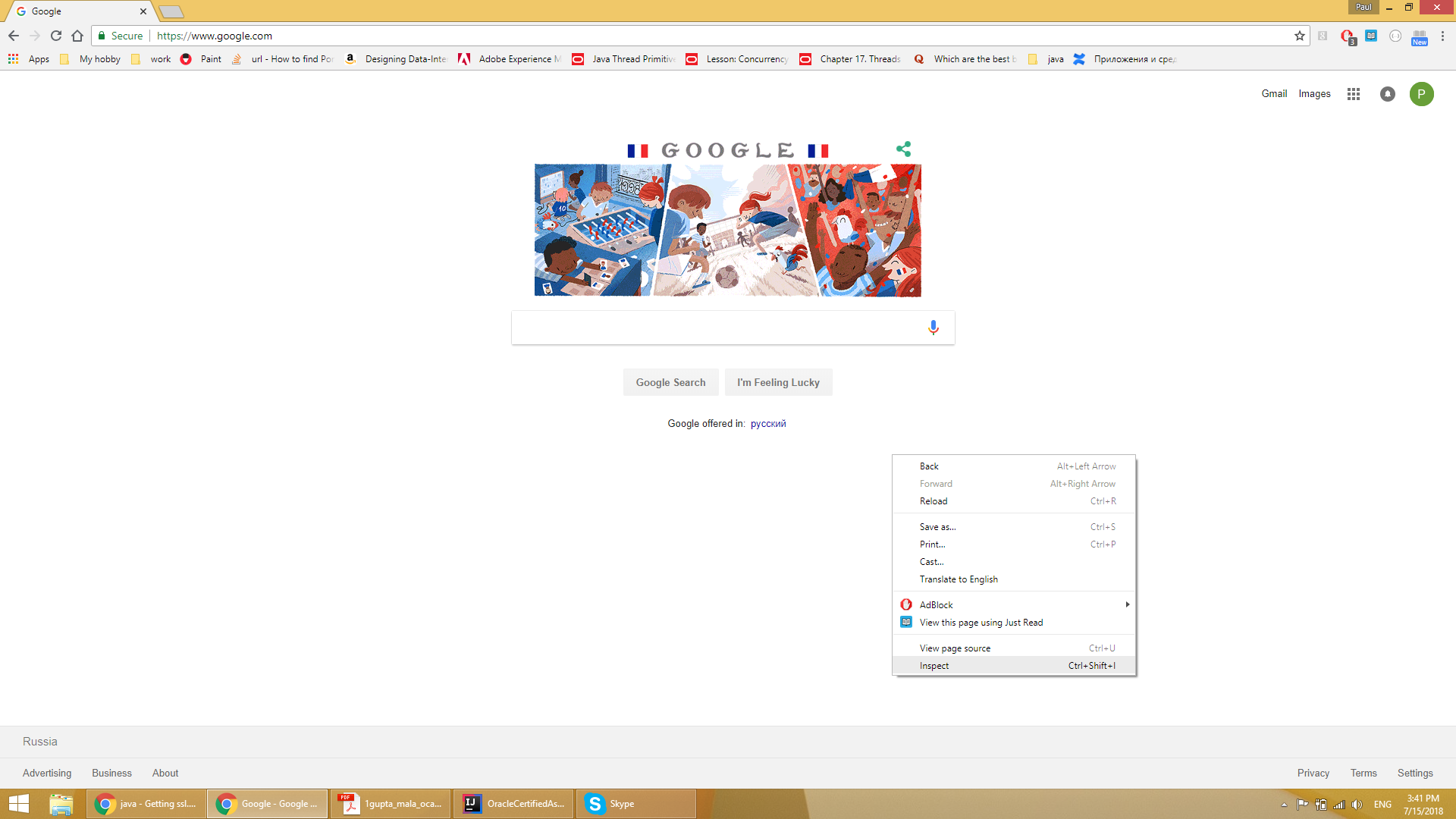

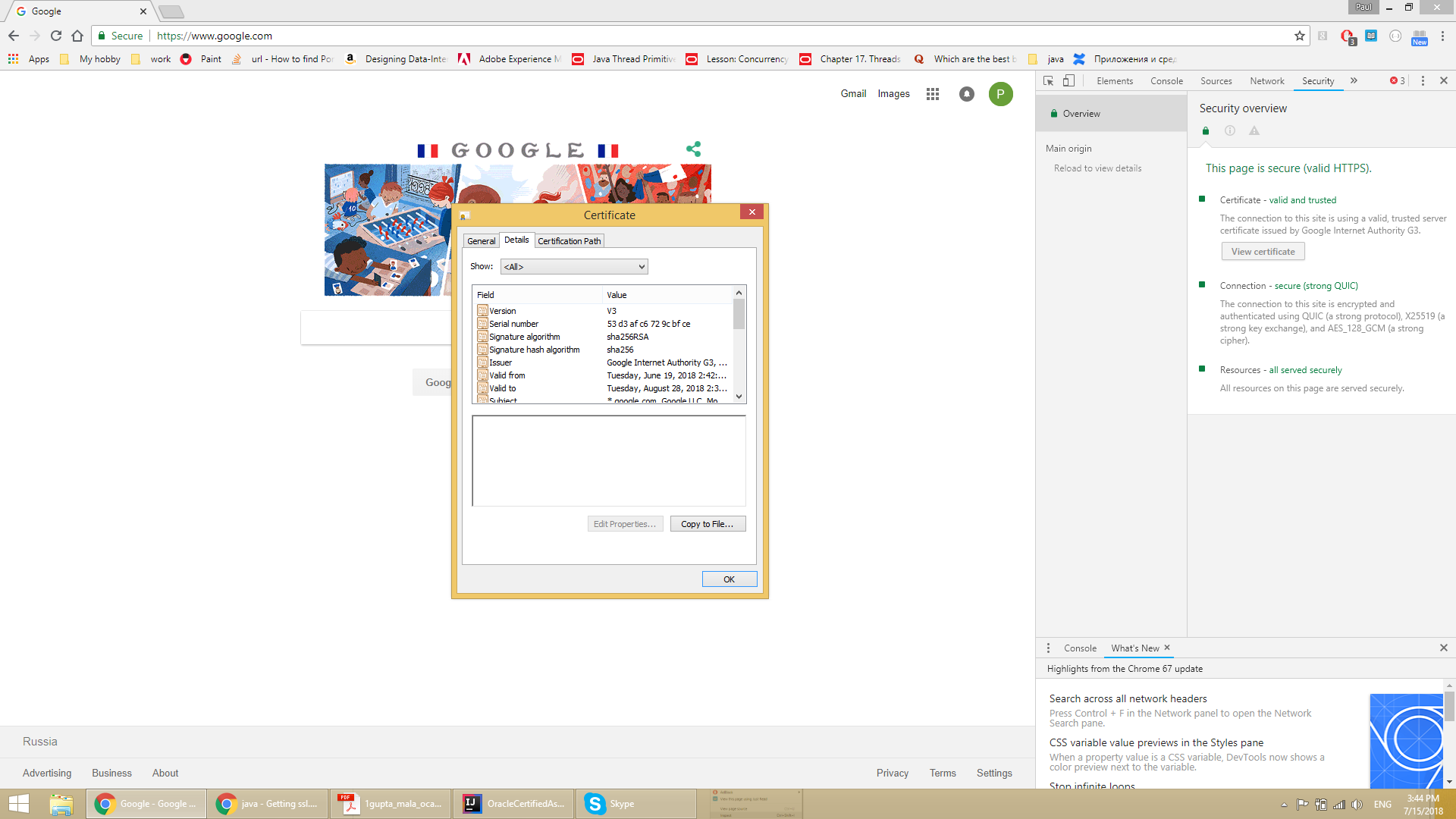
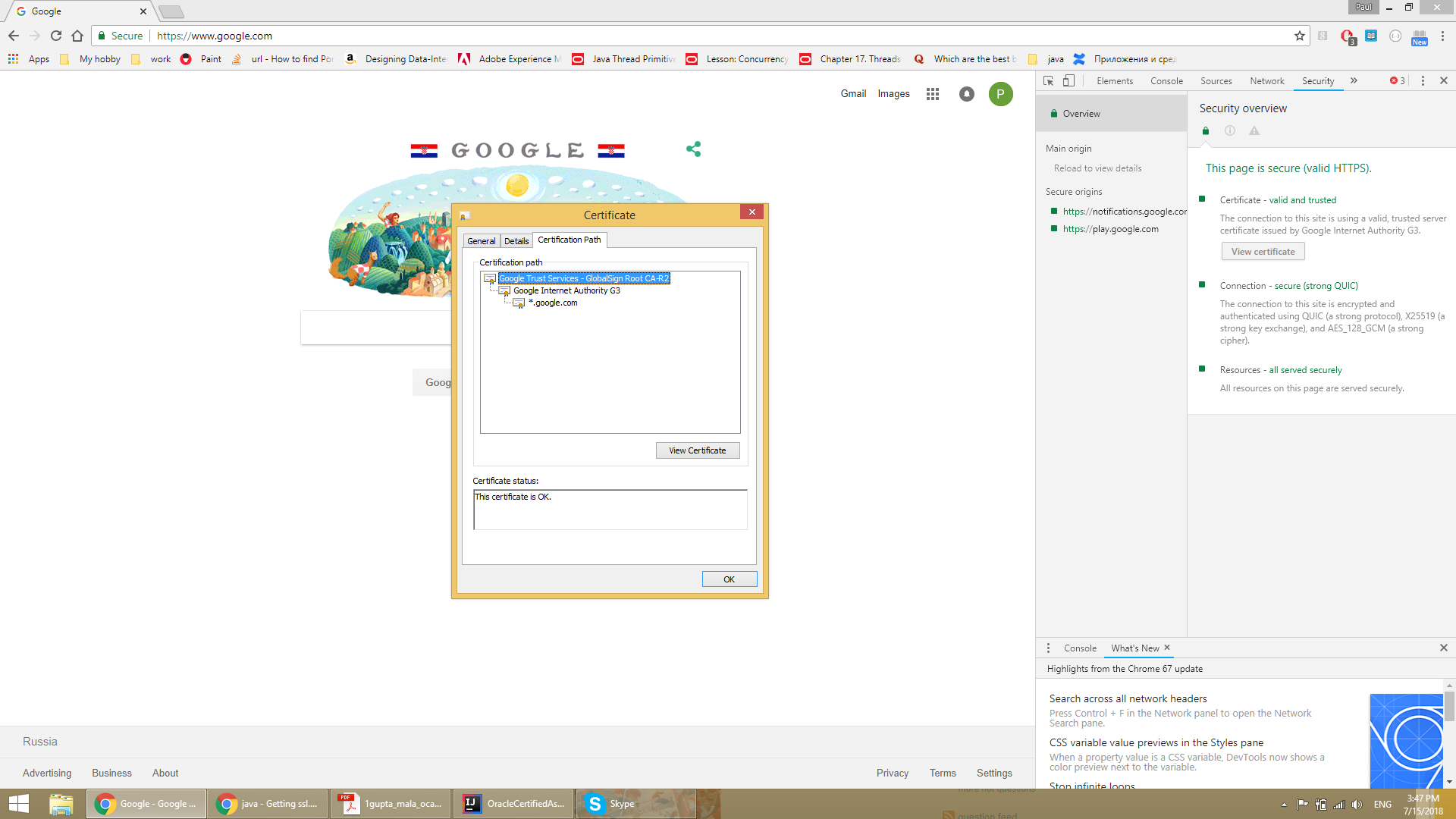


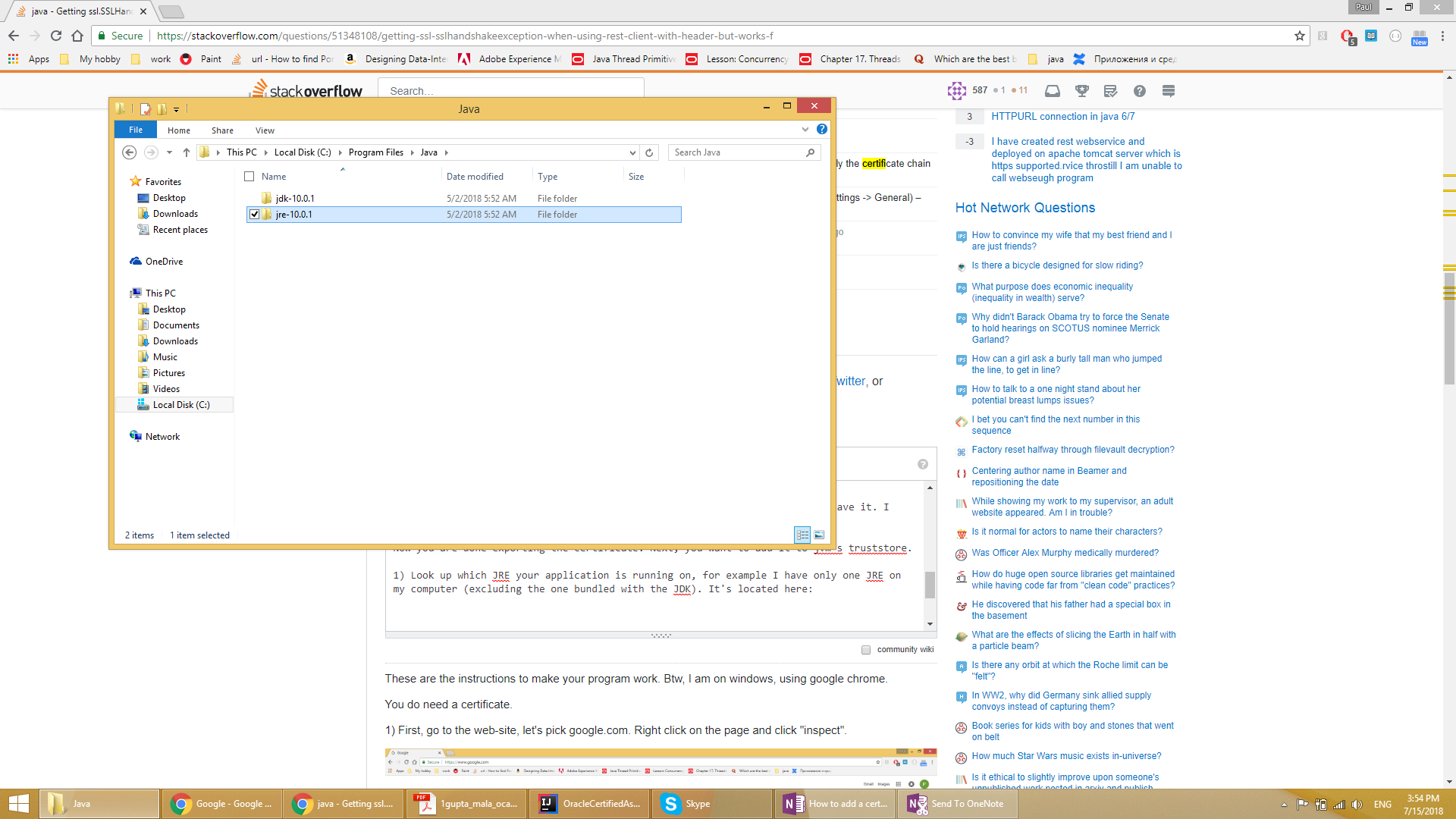
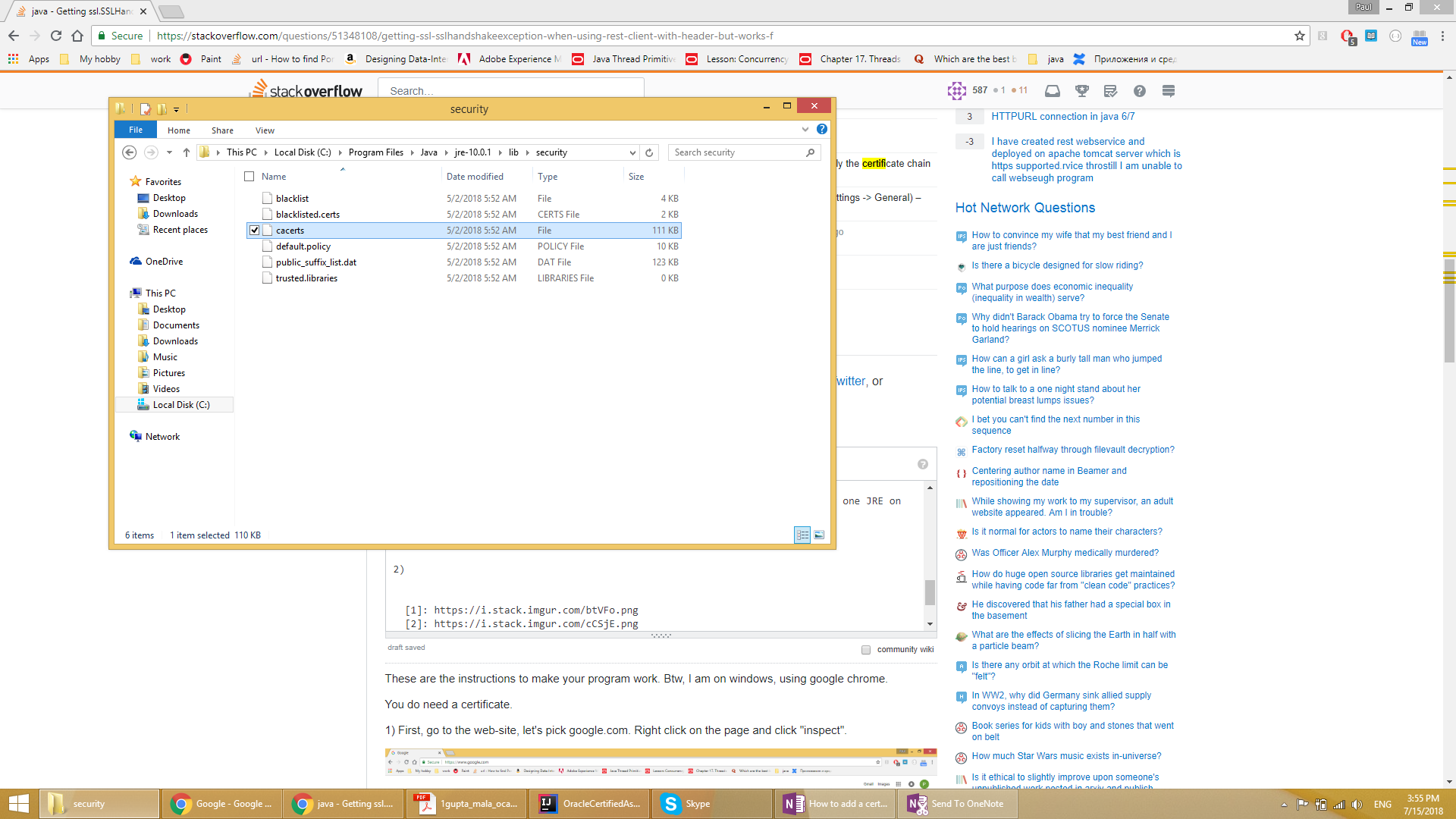
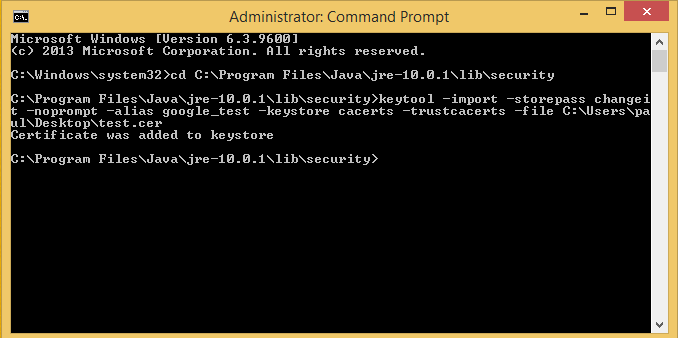
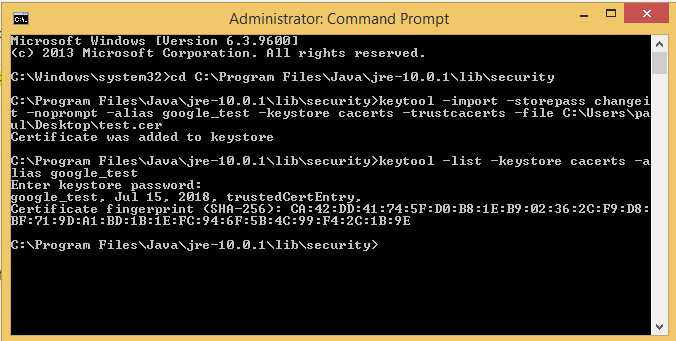
openssl s_client -connect abc.com:443, particularly the certificate chain part – Hellenic